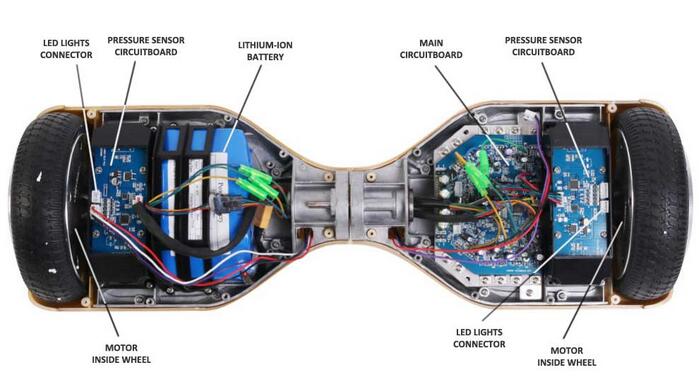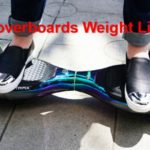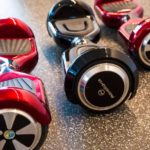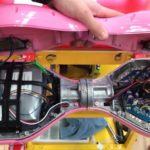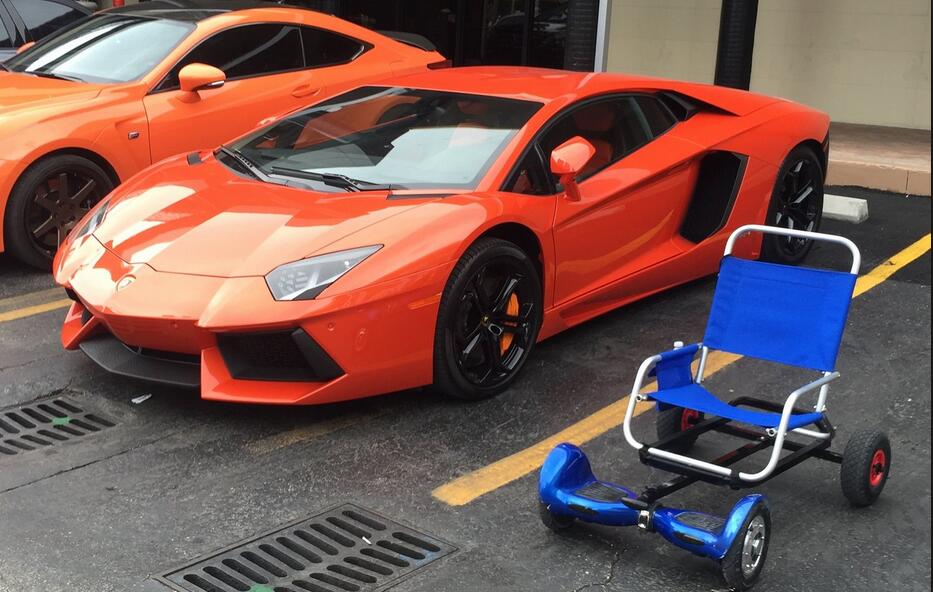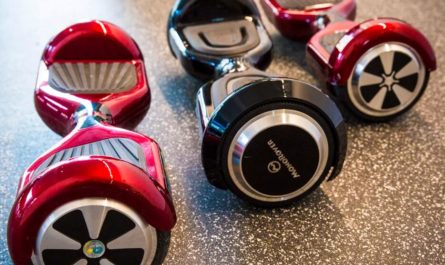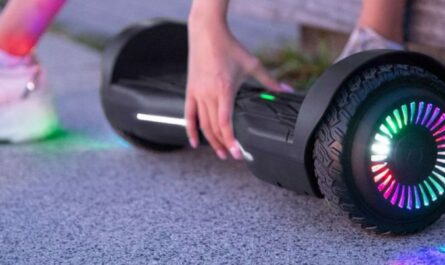Hoverboards have been a popular mode of transportation and a source of entertainment for several years now. They are also known as self-balancing scooters designed to look futuristic, modern, and sleek. If you want to learn more about hoverboards and what they look like, this article is for you. In this article, we’ll delve deep into the hoverboard’s design, aesthetics, and distinctive features that make it a modern icon of cool mobility.
Table of Contents
The Basics of Hoverboard Design
At its core, a hoverboard is a self-balancing personal transporter consisting of two motorized wheels connected by a pair of articulated pads on which the rider stands. Below, we outline the key components:
- Deck: This is where riders place their feet. It’s usually covered with a grippy material for stability.
- Wheels: They typically range from 6.5 to 10 inches in diameter.
- Gyroscope: Essential for maintaining balance and control.
- Batteries: Often lithium-ion, these power the hoverboard.
- Motors: Embedded in the wheels, they provide the necessary torque.
Design Pointers:
- Aesthetics: Hoverboards come in various styles, from sleek, futuristic looks to rugged, off-road designs.
- Functionality: The design affects the hoverboard’s performance, especially in terms of balance and speed.
Hoverboards have evolved significantly since their inception, with advancements in technology enhancing their design and performance.
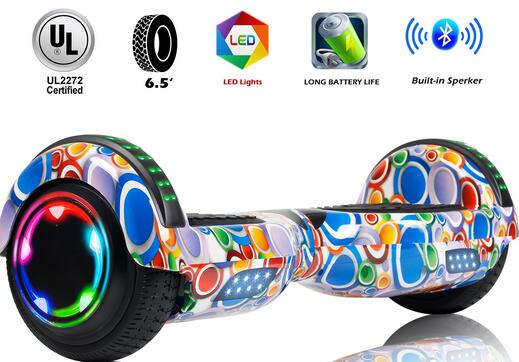
Understanding Hoverboard Aesthetics
Hoverboards are not just about getting from point A to B; they’re about doing so with flair. Here’s what to expect visually:
- Standard Hoverboard Appearance: Generally, hoverboards have a sleek, streamlined look with a symmetrical design that exudes a futuristic vibe. The smooth lines and clean edges contribute to their modern aesthetic.
- Size and Shape Variations: Depending on the model, hoverboards can appear robust for rugged terrains or compact for smooth surfaces. Some hoverboards are designed with larger foot pads to accommodate riders with bigger shoe sizes.
- Color and Pattern Choices: From classic black to vibrant multi-color patterns, customization is key in hoverboard aesthetics. Popular color choices include silver, red, blue, and white, but manufacturers continually introduce new hues to suit different tastes.
- LED Lights: These aren’t just for show; they improve visibility during evening rides. Many hoverboards feature LED lights on the front and rear sides, with various lighting patterns and color options available. Some models even have lights on the wheels, adding an extra touch of visual appeal.
- Material Finishes: Manufacturers offer hoverboards with different material finishes to enhance their aesthetics. Matte finishes provide a sleek and contemporary look, while glossy finishes offer a polished and reflective appearance. Chrome finishes add a touch of glamour to the overall design.
Hoverboard aesthetics are an essential aspect to consider when choosing a hoverboard. Riders can select a design that matches their personal style and sets them apart from the crowd.
The Hoverboard Frame and Build
The frame and build quality of a hoverboard greatly influence its performance and durability:
- Construction Materials: The choice of construction materials varies, ranging from durable ABS plastic to lightweight metals such as aluminum alloys. Premium models may even incorporate carbon fiber for its strength and lightweight properties. Carbon fiber offers not only a futuristic appearance but also enhances the hoverboard’s durability.
- Durability and Weight: Durability is a key consideration for hoverboards, as they need to withstand the wear and tear of daily use. Aluminum alloy frames are known for their robustness and ability to handle rough terrains, making them suitable for off-road models. Lightweight materials such as carbon fiber contribute to the overall weight reduction of the hoverboard, making it easier to carry and maneuver.
- Safety Features: To enhance safety, look for hoverboards equipped with features such as bumpers and non-slip footpads, which provide stability and protect the device from accidental damage. Some hoverboards also incorporate fender bumpers to shield the wheels from impacts.
The hoverboard’s frame and build quality play a crucial role in its longevity and performance capabilities. Riders should consider these factors to ensure a safe and enjoyable riding experience.
The Wheels: Not Just for Movement
While the wheels of a hoverboard are primarily responsible for its movement, they also contribute to its overall appearance:
- Wheel Sizes: Hoverboards typically come with wheels ranging from 6.5 inches to 10 inches in diameter. Smaller wheels are suited for smooth surfaces, allowing for nimble and agile movements. Larger wheels are designed for off-road adventures, providing better traction and a smoother ride on uneven terrains.
- Wheel Aesthetics: Many hoverboards feature built-in LED lights on the wheels, which not only enhance visibility during nighttime rides but also add a touch of futuristic flair to the overall look. LED lights on the wheels can come in various colors and patterns, illuminating the ground beneath the hoverboard and creating a captivating visual effect.
The choice of wheel size and aesthetics should be based on the rider’s intended usage and personal preferences, ensuring that the hoverboard’s performance and style align with their needs.
Hoverboard Lighting and Customization
Lighting is not only a functional aspect of hoverboards but also an opportunity for riders to customize their devices:
- Built-in Lights: Many hoverboards feature LED lights integrated into the design. These lights not only provide visibility during low-light conditions but also contribute to the overall aesthetics of the hoverboard. LED lights can be found on the front, rear, and sides of the hoverboard, and their brightness and color can often be adjusted or customized through the hoverboard’s app.
- Customization Options: For those looking to personalize their hoverboards, there are various options available. Decals, skins, and other accessories can be used to create a unique look that reflects personal style. Some hoverboards even have interchangeable shells that allow riders to change the color or design of the hoverboard easily.
Customizing a hoverboard with unique lighting features and personalized designs allows riders to express their individuality and stand out from the crowd.
Technological Features That Shape A Hoverboard’s Look
Hoverboards are not just simple scooters; they often incorporate advanced technological features that enhance both performance and aesthetics:
- Smart Features: Many modern hoverboards come equipped with Bluetooth connectivity, allowing riders to connect their smartphones and control various aspects of the device through a dedicated mobile app. GPS tracking, speed control, and even customizable LED light patterns are some of the features that can be accessed through these apps. The app interface often provides a sleek and intuitive design that complements the hoverboard’s overall aesthetics.
- Speaker Systems: Some hoverboards boast built-in speaker systems, enabling riders to enjoy their favorite music while cruising around. These speakers are often seamlessly integrated into the hoverboard’s design, contributing to its futuristic look. Riders can connect their smartphones or other devices via Bluetooth to stream music directly to the hoverboard’s speakers.
By integrating smart features and audio capabilities, hoverboards not only look cutting-edge but also provide an enhanced riding experience that combines technology and entertainment.
Hoverboard Variants and Special Editions
Hoverboards come in various forms, with different designs catering to specific preferences and use cases:
Segway Hoverboards vs. Traditional Hoverboards
Segway hoverboards, inspired by the Segway PT, feature a central handlebar for added stability.
The handlebar design adds a unique visual element to the hoverboard’s overall look, providing riders with additional support and control. Traditional hoverboards, on the other hand, are handlebar-free, relying solely on the rider’s balance for maneuvering.
Self-Balancing Scooters vs. Single-Wheeled Hoverboards
Self-balancing scooters, also known as hoverboards, have two wheels placed side by side, offering better stability and ease of use.
The symmetrical design of self-balancing scooters creates a visually balanced appearance. Single-wheeled hoverboards, often referred to as electric unicycles, provide a unique riding experience that challenges riders with the need for precise balance.
These compact devices feature a single large wheel positioned between the rider’s feet, creating a distinctive and futuristic look.
Each variant brings its own distinct design elements and riding characteristics, allowing users to choose the hoverboard that best suits their preferences and riding style.
The Future of Hoverboard Design
As technology continues to advance, hoverboard design is expected to evolve, pushing the boundaries of what’s possible:
- Upcoming Trends: Integration of displays that provide real-time information, such as speed and battery life, is a possibility. These displays can be seamlessly integrated into the hoverboard’s frame, providing riders with convenient access to essential information. Additionally, advancements in Artificial Intelligence (AI) may enable hoverboards to adapt to individual riding styles and preferences, further enhancing the overall riding experience.
- Sustainable and Eco-Friendly Design: With growing environmental concerns, hoverboard manufacturers are exploring sustainable materials and eco-friendly manufacturing processes. Recycled plastics, renewable energy sources, and improved battery efficiency are some of the potential areas of focus. The adoption of sustainable design practices not only contributes to a greener future but also adds a unique selling point to hoverboards.
The future of hoverboard design is exciting, with possibilities that extend beyond aesthetics, focusing on enhancing performance, sustainability, and user experience.
Buying Guide: Aesthetic Considerations
When purchasing a hoverboard, aesthetics play a significant role in the decision-making process. Consider the following factors:
- Design and Style: Think about the overall design and style that appeals to you. Whether you prefer a minimalist, sleek look or a bolder, more vibrant design, there are hoverboards available to suit every taste. Take into account the overall shape, color options, and LED light patterns when selecting a hoverboard that aligns with your personal style.
- LED Lights and Customization: Determine if you want a hoverboard with customizable LED lights or the ability to add personalized decals and skins. These features allow for a more unique and personalized riding experience. Consider the range of customization options available for different hoverboard models, as well as the ease of customization.
By considering these aesthetic elements, you can choose a hoverboard that not only performs well but also aligns with your personal style.
Conclusion
Hoverboards have evolved from a futuristic fantasy to a modern-day transportation marvel. By understanding the intricate details of their design, you can make an informed decision when selecting a hoverboard that not only reflects your personal style but also meets your performance and functionality preferences.
From the sleek appearance to the advanced technological features, hoverboards offer an exciting and stylish mode of transportation for riders of all ages. So hop on, embrace the future, and enjoy the ride!
FAQs
1. What is the average weight of a hoverboard?
The weight of a hoverboard can vary, but on average, they typically weigh between 20 to 30 pounds, depending on their size and materials used in construction.
2. How long do the LED lights on a hoverboard last?
The lifespan of LED lights on hoverboards can vary depending on usage and quality. Generally, LED lights are designed to last for several months to years with regular use.
3. Can hoverboard designs impact performance?
While hoverboard design primarily focuses on aesthetics, certain design elements, such as wheel size and body construction, can affect performance. Smaller wheels may offer better maneuverability on smooth surfaces, while larger wheels are designed for off-road adventures.

